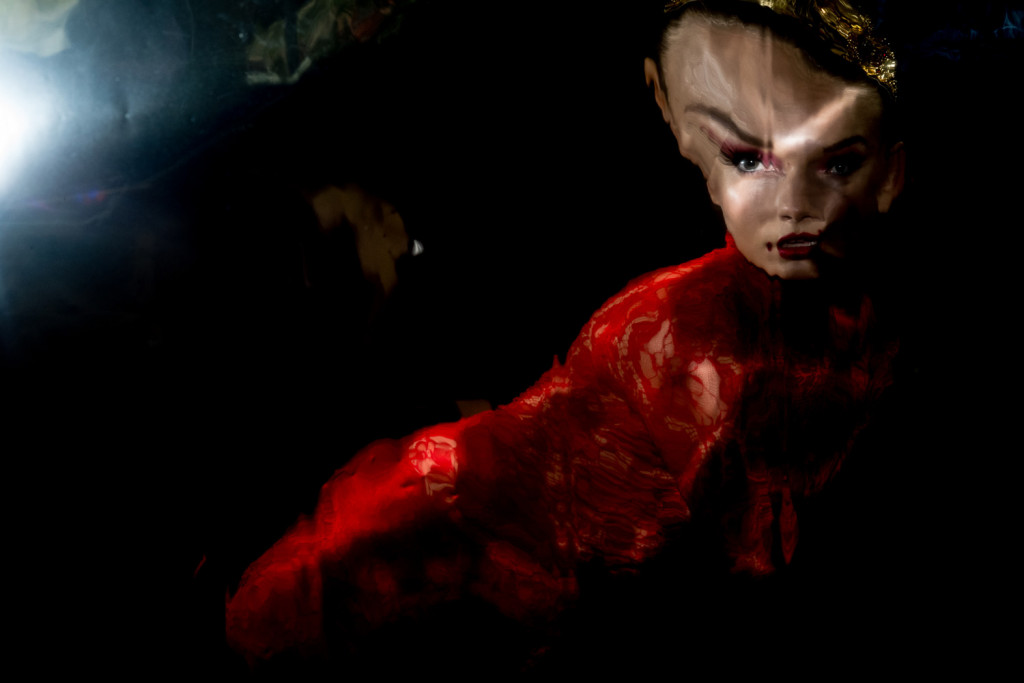
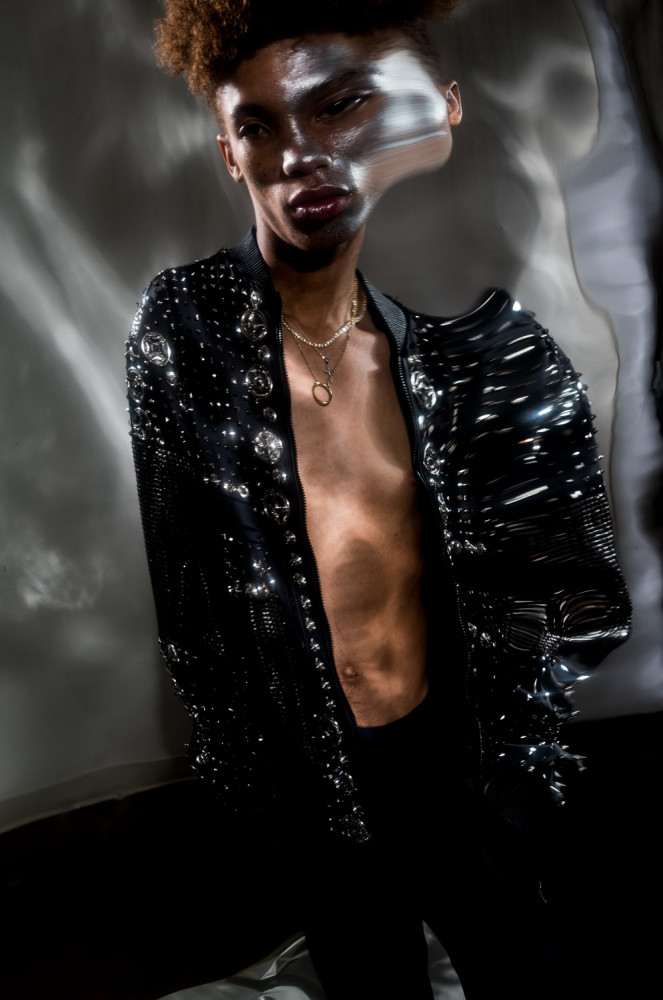
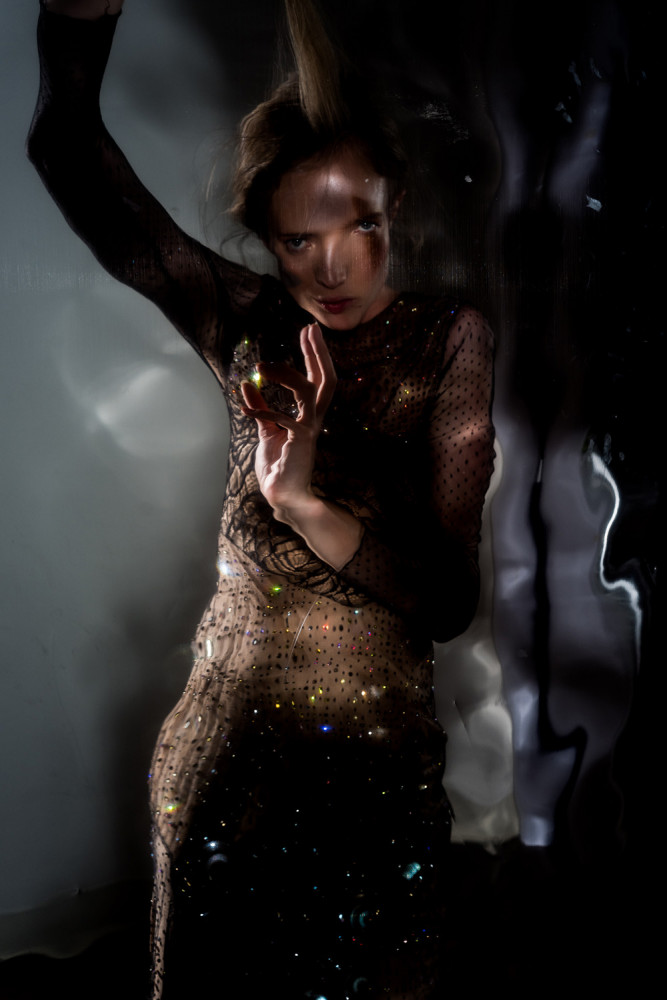
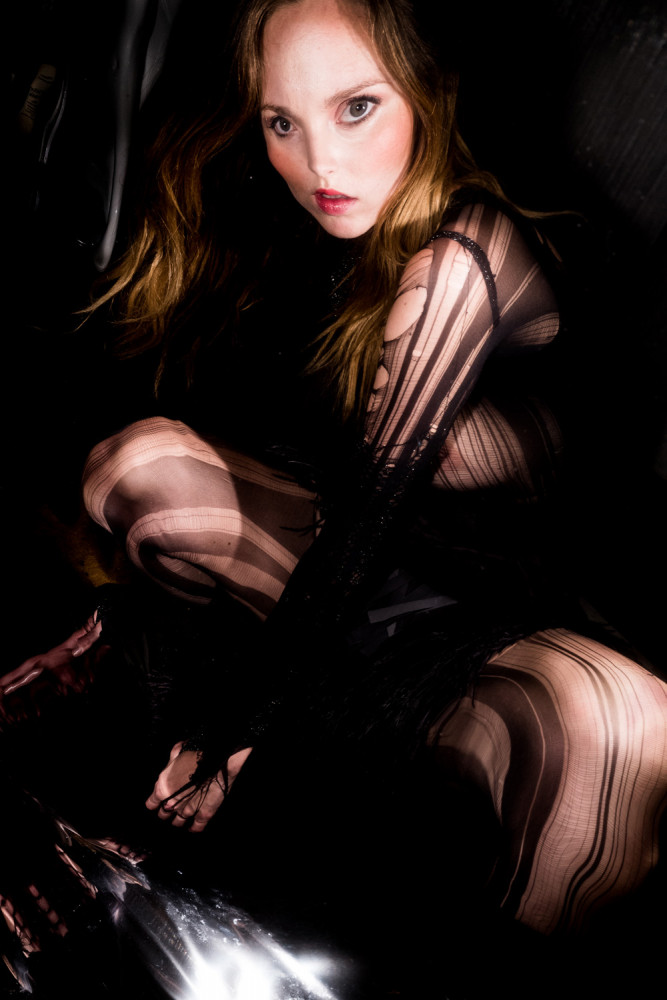

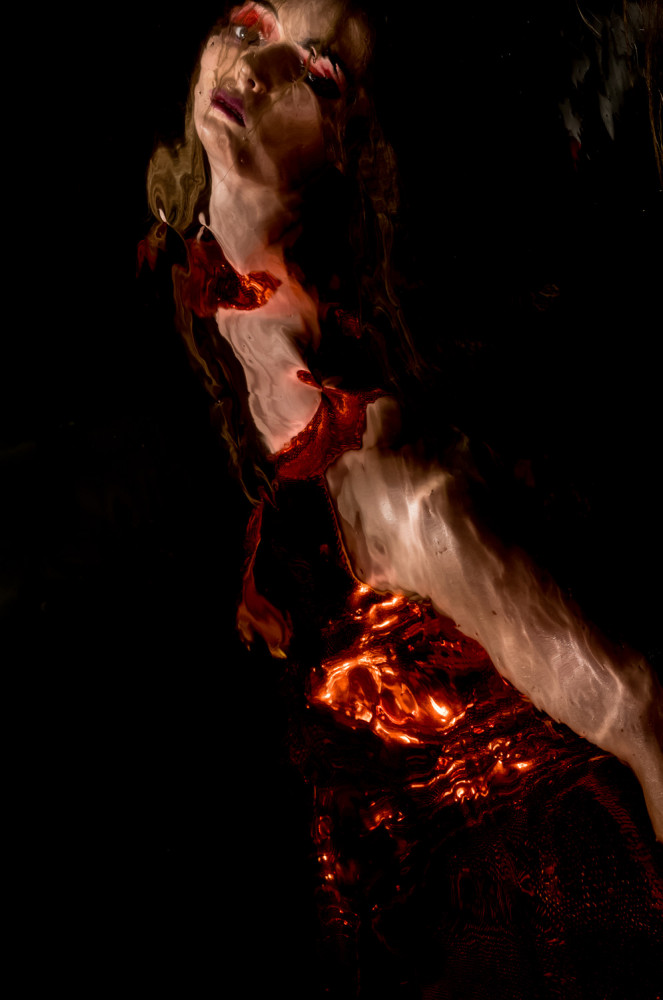
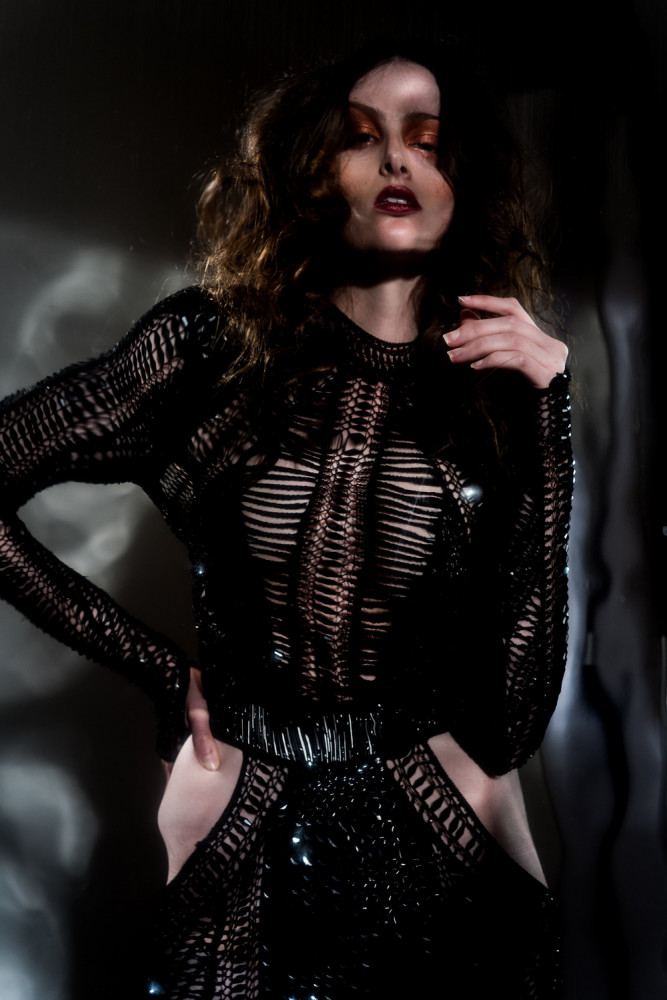
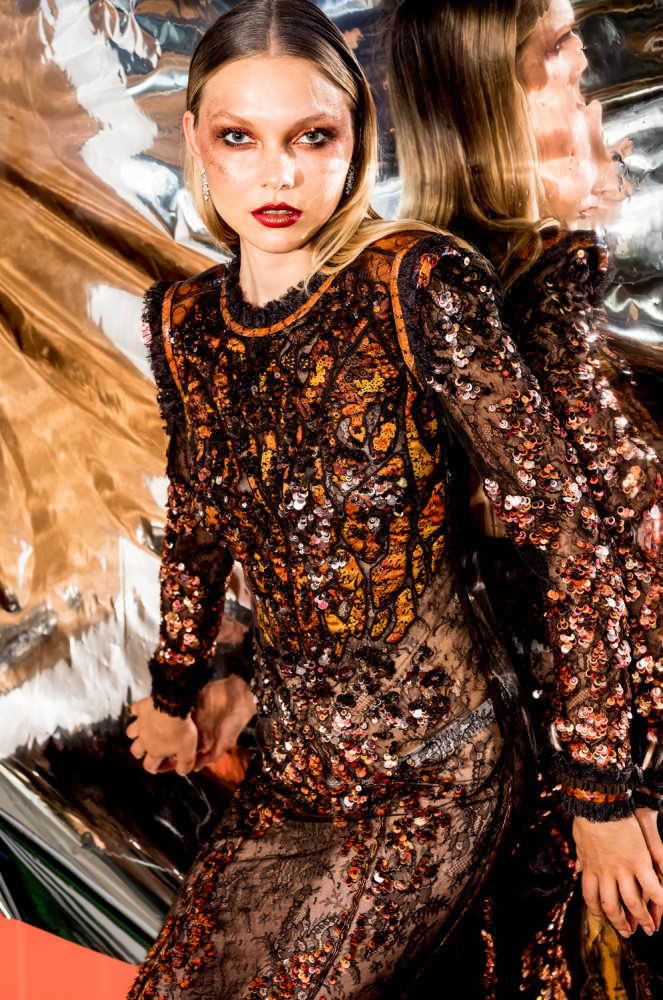
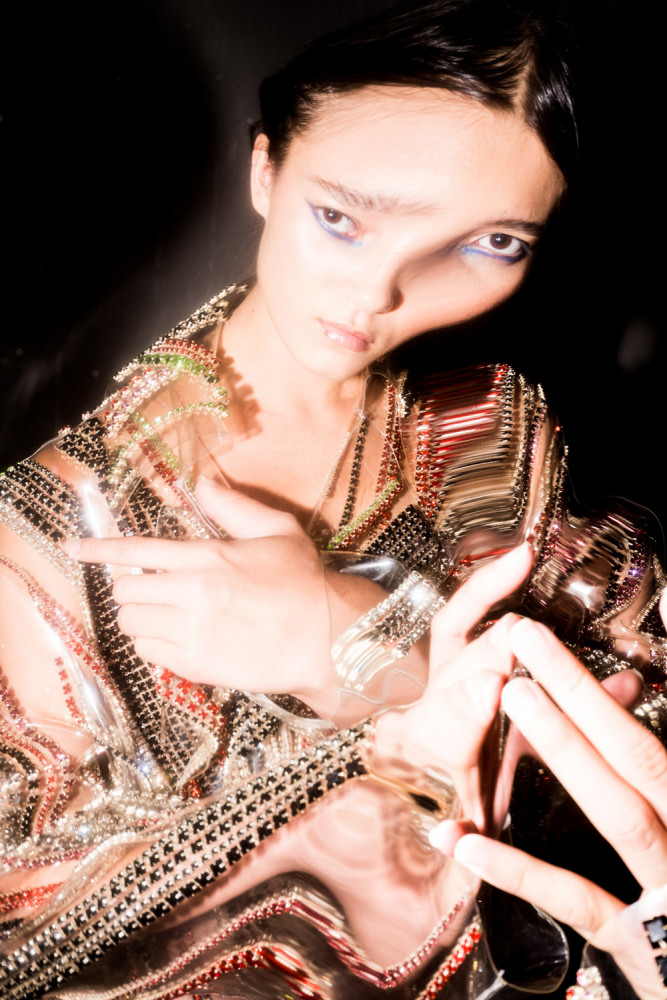
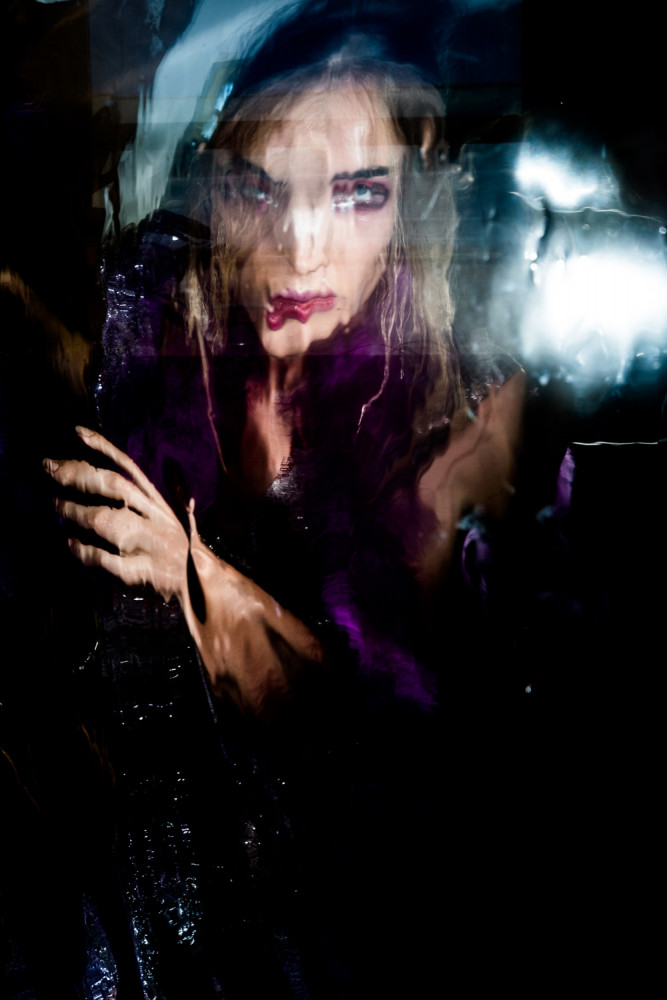
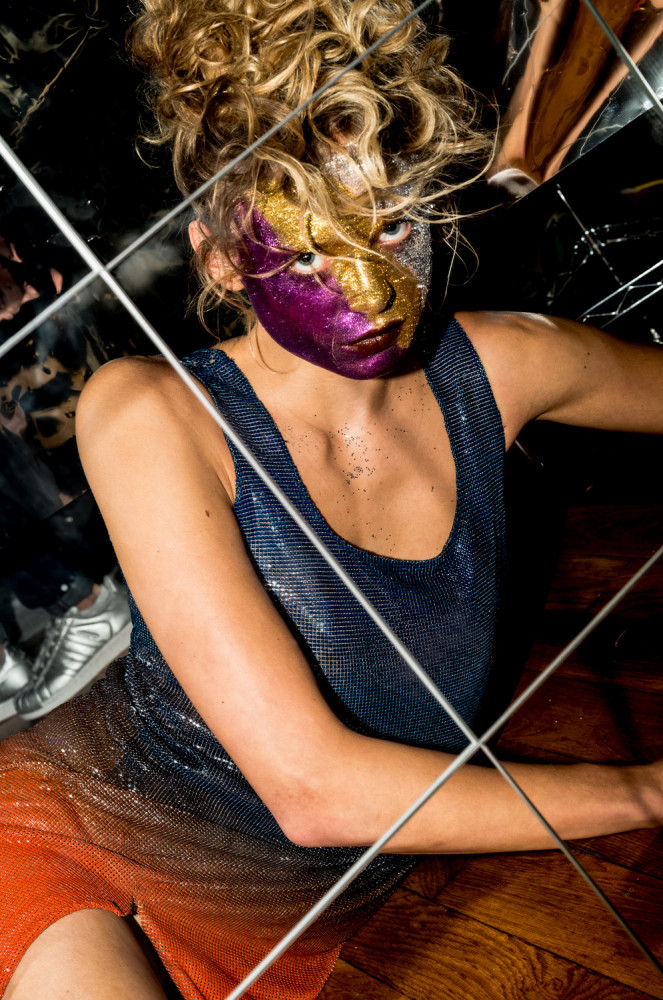
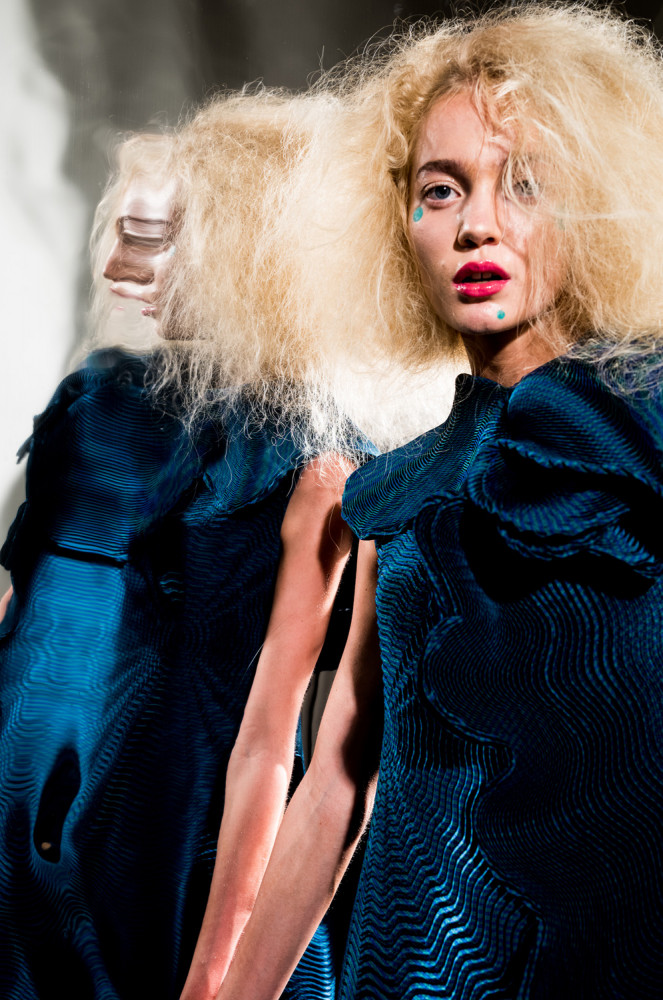
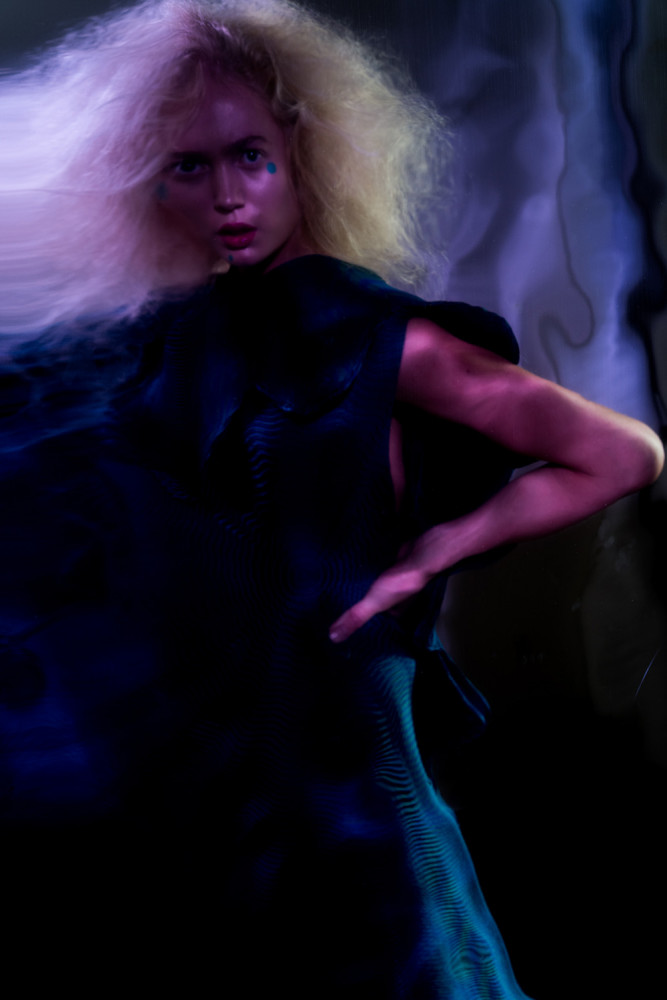
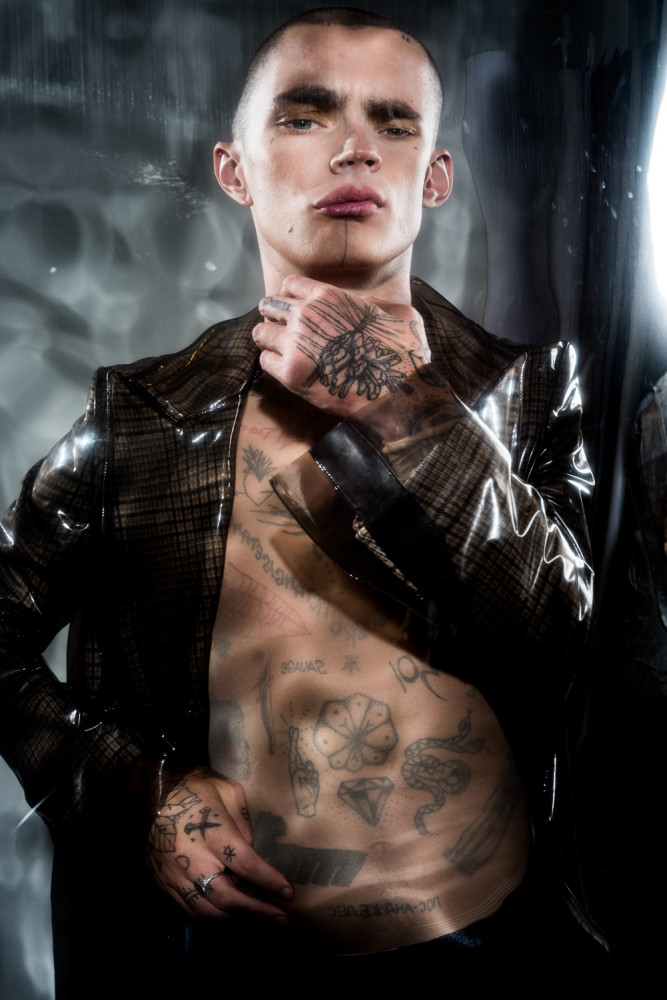
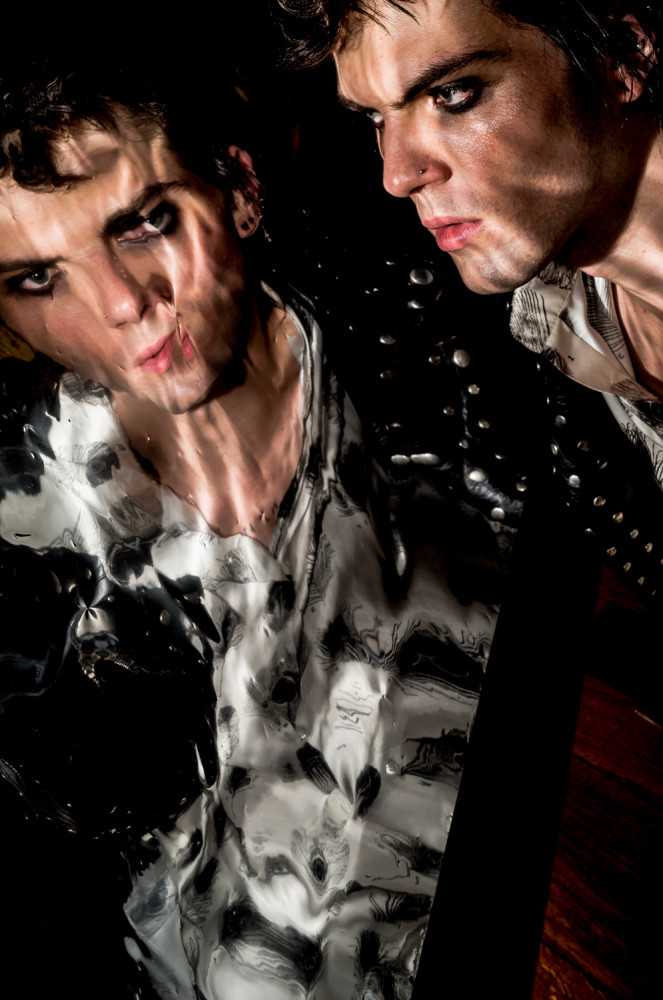
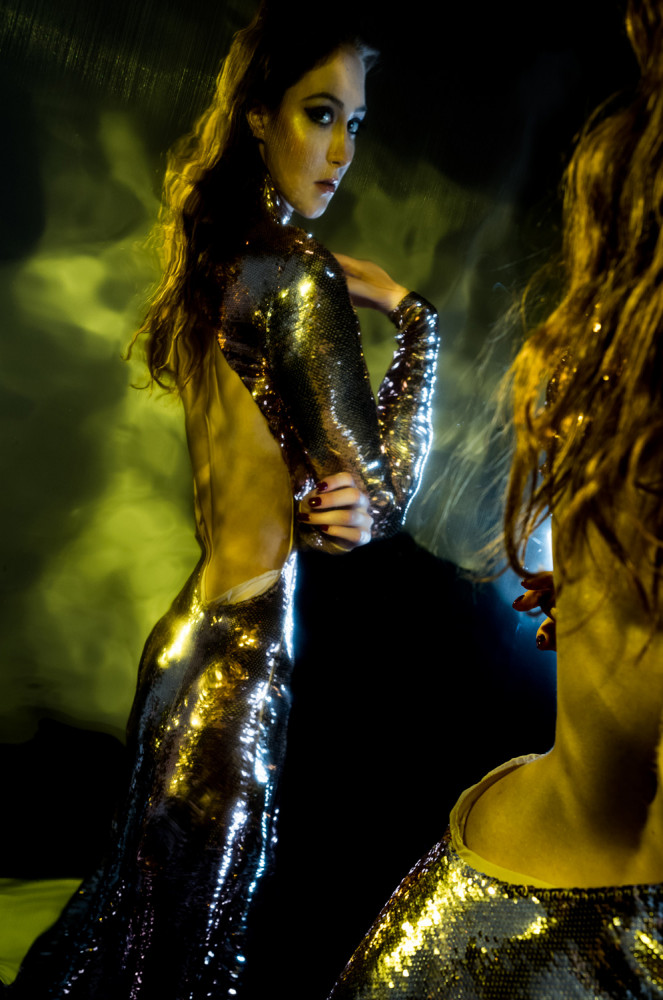
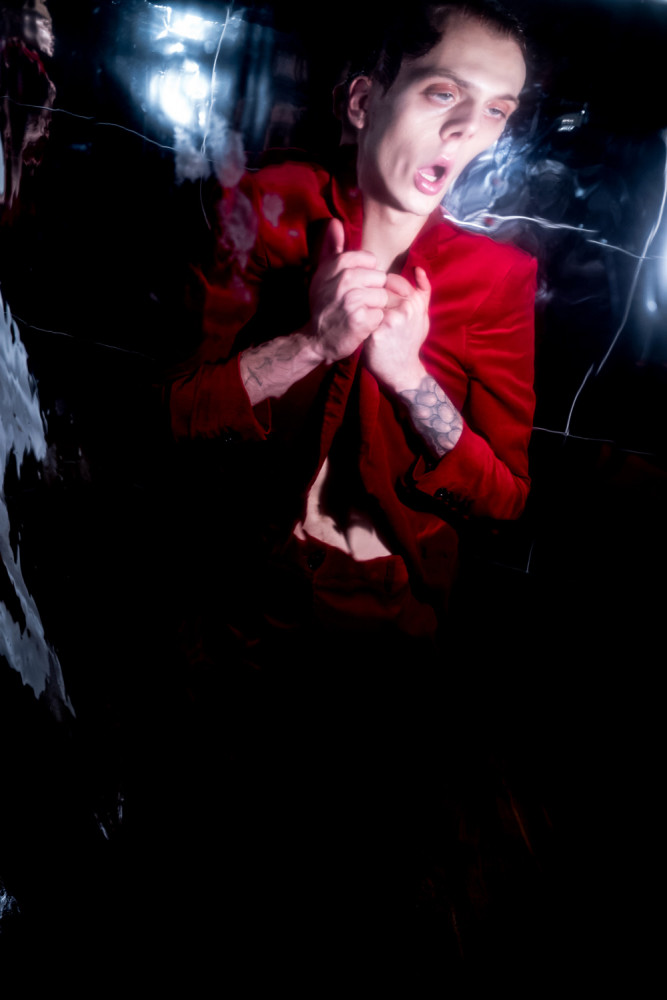
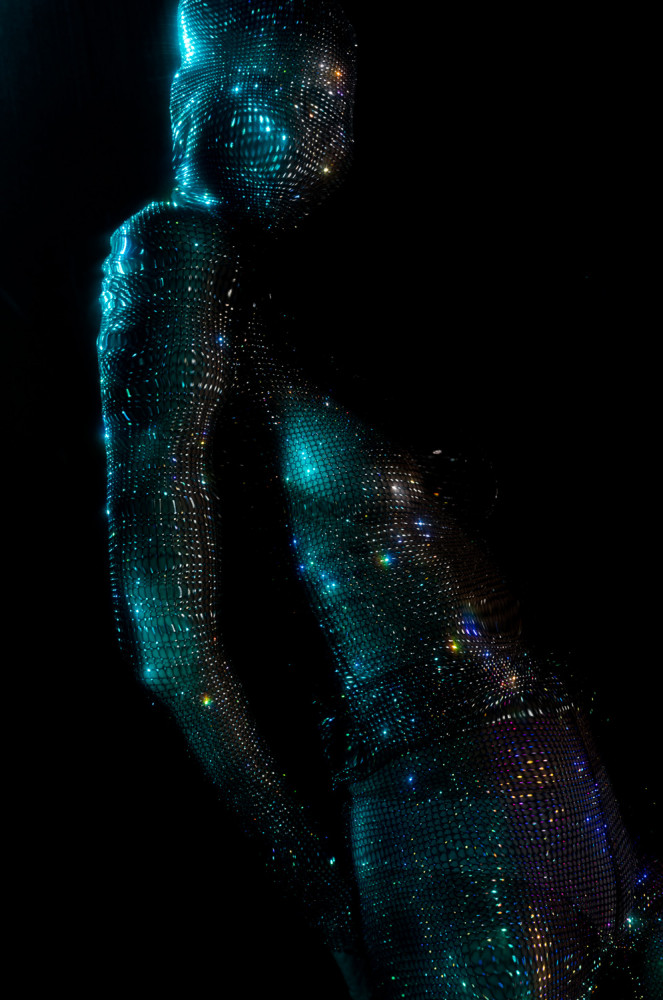
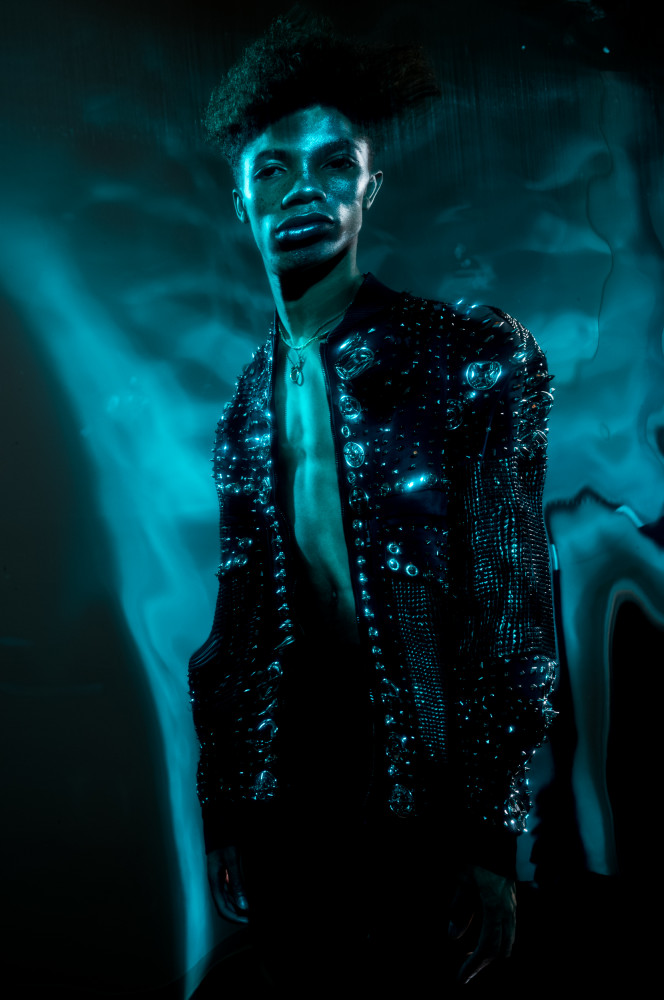
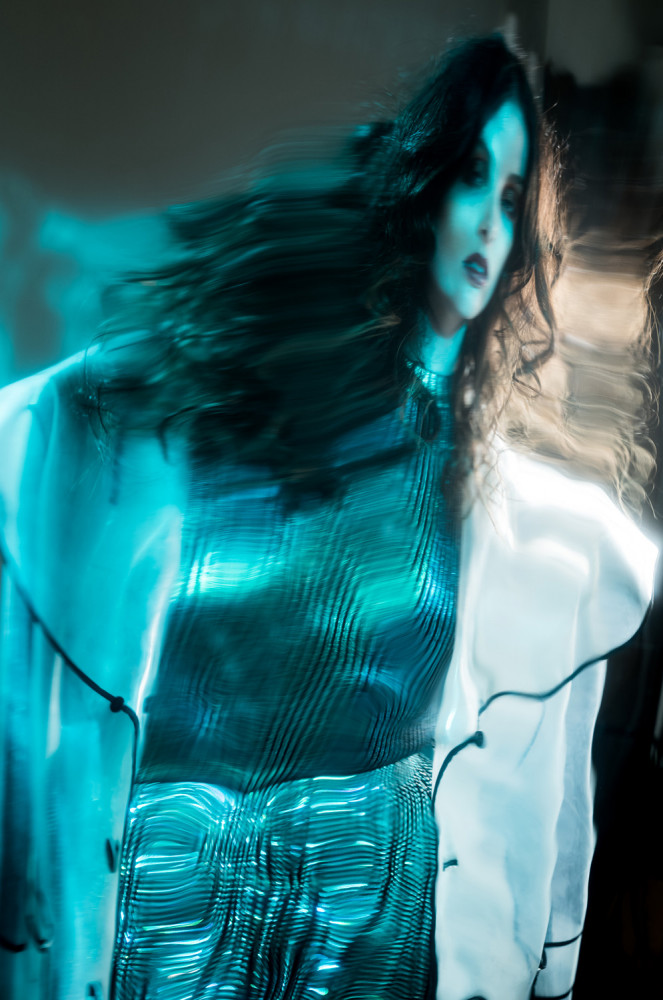

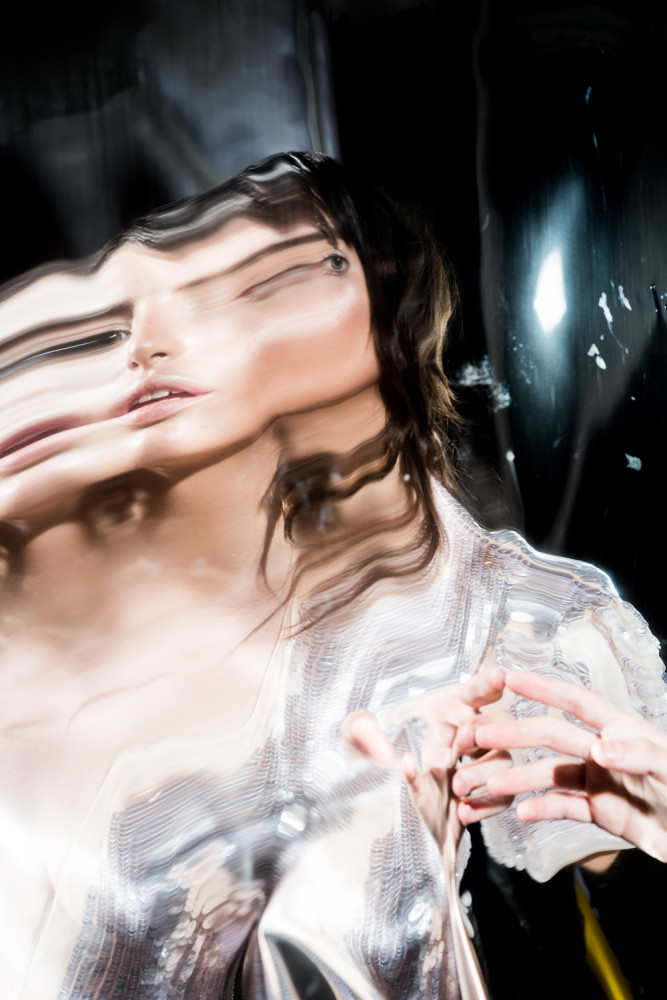
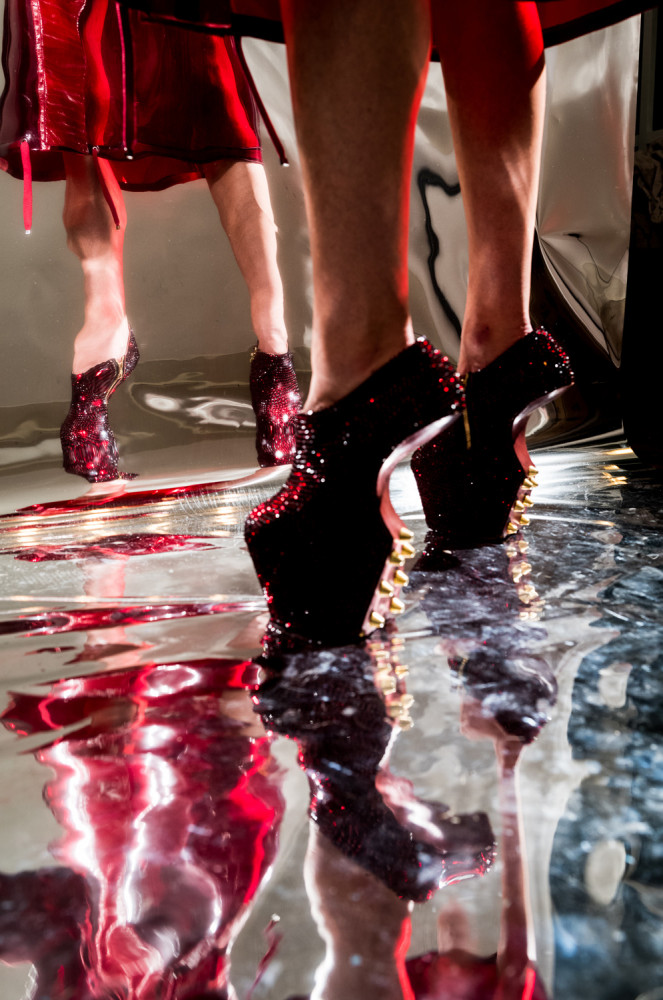
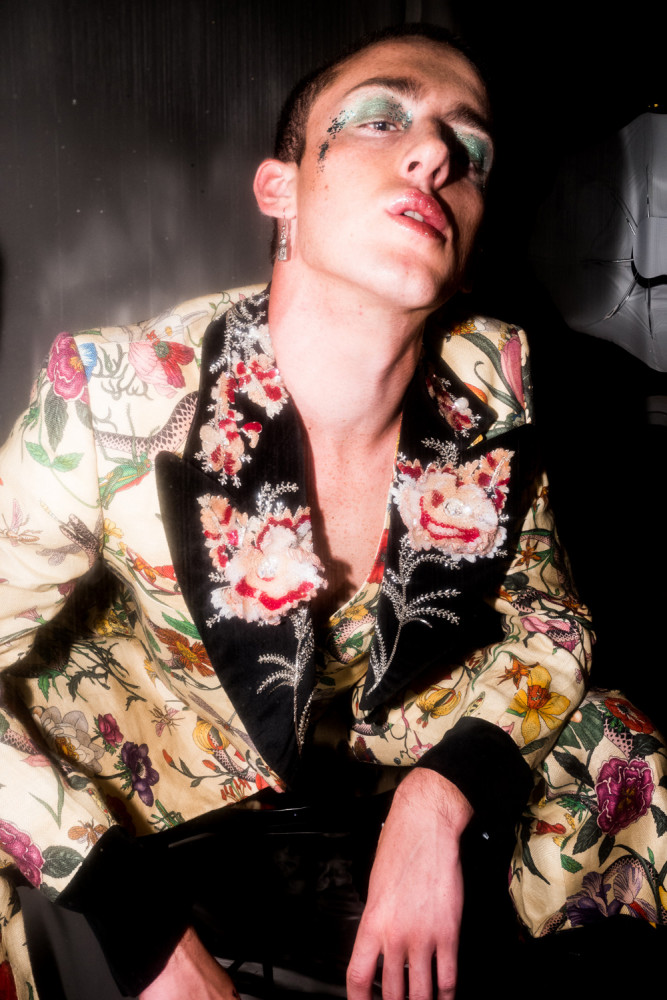
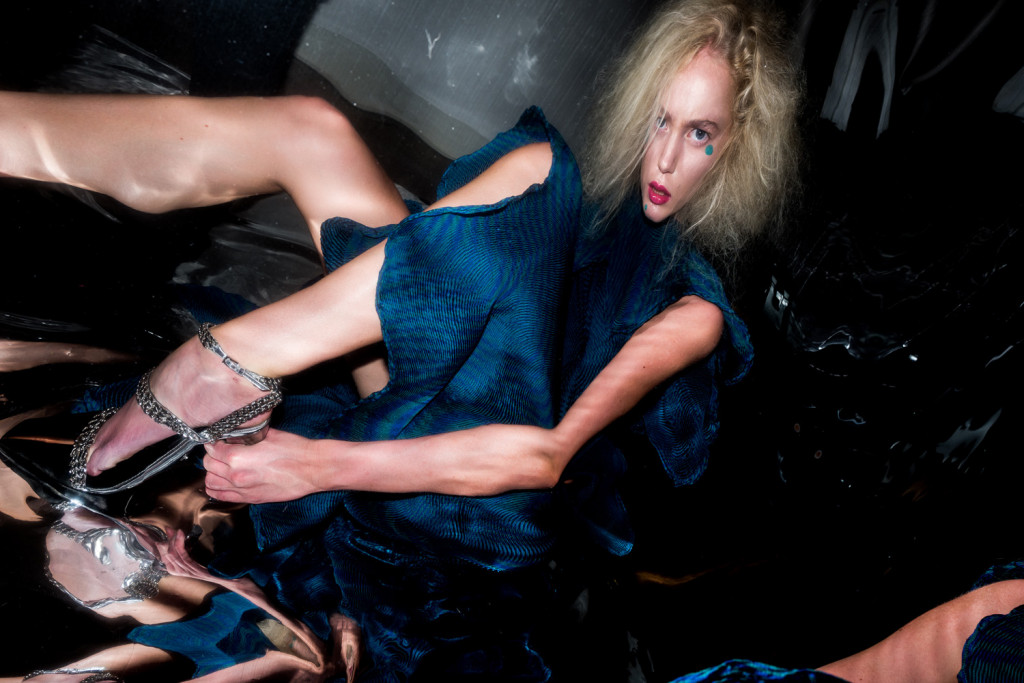

























INTERVIEW
Bil Brown
PhOTOGRAPHY Bil Brown STYLING Lisa Jarvis HAIR Gonn Kinoshita, Martin Christopher Harper MAKEUP Michelle Coursey, Tracy Alfajora HAIR & MAKEUP Omayma Ramzy, Laura Raczka, Elaina Karras, Jared Lipscomb, Kasey Vanwey STYLING ASSISTANT Chad Cameron, Thomas Kivell PHOTO ASSISTANT No Land, Drew Pluta ASSISTANT PRODUCERLisa Jarvis, Mynxii White FASHION Versace, dsquared, Julien Macdonald, Alexander McQueen, Pierre Hardy, Thom Browne, Alexandre Vauthier, Dolce & Gabbana, Noritaka Tatehana, Issey Miyake, Tom Ford, Faith Connexion, Monse, Emilio Pucci, Mulberry, Miu Miu, DIOR, Givenchy, Philosophy, Roberto Cavalli, Maison le faux, Balenciaga, Balmain, Dior Homme, CALVIN KLEIN 205W39NYC MODELS Tay Godsey, Alex Swan, Ema McKie, Simon Kotyk, Julie Lillemoen, Kris Kidd, Karsen Liotta, Siobhan O’ Keefe, Karsen Liotta, Richie Hines, Stevie DeFelice, Maja Brodin, Victoria Germyn, Ian Weglarz, Diana Karl, Mynxii & Sebastian CAMERA Leica S (Typ 007) with Elmarit-S 45 f/2.8 ASPH. (CS),Summarit-S 70 f/2.5 ASPH. (CS), Summicron-S 100 f/2 ASPH. and Leica SL with LEICA SUMMICRON-M 35mm f/2 ASPH. and M10 with LEICA SUMMICRON-M 28mm f/2 ASPH. also Leica Q
Inspired by Ira Cohen’s ‘The Mylar Chamber’ from the sixties, Bil Brown photographed dozens of models for ‘Mylar’, his reinterpretation of the work. Creating surprising and psychedelic deformations and metamorphoses, Brown’s series is a homage to the original artist.
The way you photographed ‘Mylar’ was completely different to how you normally work. Where did the idea come from? How did you go about it?
I was inspired by the poet and photographer Ira Cohen’s ‘The Mylar Chamber’ project from the sixties. To some extent, my series is a homage to his work. Ira used the synthetic material known as Mylar, to capture celebrities from among his acquaintances in psychedelic-like experiments. In the original ‘The Mylar Chamber’, for example, you see artists such as Jimi Hendrix, or members of Andy Warhol’s Factory, such as Edie Sedgwick. Cohen had also already authored a series of poems – in collaboration with Allen Ginsburg (who was to be my teacher years later) and others belonging to the artist and poetry scene in the Lower East Side and Manhattan. I see this series as part of a larger, overall project: it’s all about studying my predecessors, and working on the basis of previous experiments and historic, contextual works, with the aim of identifying a kind of genealogical tree, and internalising it in my artistic approach. Bruce Gilden once said to me that in photography we are all part of a bigger whole – we can’t ignore what came before us, yet we are also not allowed to directly imitate it.
With this experiment, did you know exactly what it was going to produce or were there moments of surprise?
I didn’t have the slightest idea what was going to happen! Mylar has the reflecting properties of a mirror, yet also behaves rather like something fluid – similar to a crazy hall of mirrors at a funfair. The surface moves erratically: this means that when I use a flash or a strobe light, they get reflected and frame the subject; at the same time they are distorted, and, in my opinion, in a manner that expresses the essence of an emotion. The secret behind these pictures is that, to a large degree, I took them directly from the camera, with virtually no post-processing – except that I maybe intensified a few dark tones here and there, and sharpened the pictures a bit to achieve more clarity. In principle, however, the pictures show exactly what the camera captured in a fraction of a second – in other words, something that will never come about again in this form. And for me, that is precisely the quintessence of a photographic image.
You worked with incredible numbers of models for this project – in New York City and in Los Angeles. Why so opulent?
Ira Cohen’s original project stretched over a span of months or maybe even years. So I wanted to convey a similar sense of community, and also present different perspectives – but I wanted to do it within the time frame of a few days. The series was produced over two week-ends; first in Brooklyn and then in Los Angeles. However, in addition to models, I captured a new generation of celebrities. For example, the role that Jimi Hendrix played back in the day, was taken on by Arrow De Wilde, lead singer of the band STARCRAWLER, and daughter of the photographer Autumn De Wilde. I also photographed Tali Lennox, the daughter of Eurythmics singer Annie Lennox, and Karsen Liotta, the daughter of actor Ray Liotta.
How were you able to bring so many figures into play at one same time?
I have good relationships with all kinds of people, agencies and so on. As soon as I mentioned the project and explained my reasons for doing it, most were immediately ready to be part of it. It was never difficult to get someone to be involved. On the production side, however, the whole thing was rather crazy! Most of the models were styled in two or three different looks. We set up the studios – mine in LA and a rented one in Brooklyn – to deal with quick changes of style. I was always photographing with a number of cameras and focal distances in a row, so as to be able to capture the different effects of the reflective material. Sometimes with the flash, sometimes with strobe lights, sometimes applying gels, sometimes not. I had one assistant in New York and one in LA. The models’ individual looks were in the hands of the stylist and beauty teams. It was a real collaboration – I gave my team free rein.
How does it feel when one’s ideas are copied by others? You’ve had bad experiences in this regard. The pictures for ‘Myler’ were taken at the end of last year and some have already been published?
Ha, well it’s definitely somewhat complicated! While Ira dressed his subjects in the iconic, psychedelic clothes of the times, I asked my stylist, Lisa Jarvis, to choose selections from the fashion collections of leading labels such as Alexander McQueen, Prada, Issey Miyake, Marc Jacobs, and so on. The outcome was 54 incredible looks on 24 models. Interestingly enough, at the time of our production, no one seems to have been working with Mylar. And then, all of a sudden, a couple of spring campaigns came out, featuring Mylar and other reflective materials; to be precise, this happened just after my art cover had appeared at Art Basel in Miami. But, that’s the world of fashion for you – people hear about an idea, and then it becomes a trend for a while. Maybe I contributed something to the collective consciousness – great, in fact!
At first I was somewhat upset, but now I simply say to myself that fashion dilutes a concept, but art gives it substances. As Yves Saint Laurent once said very pointedly: “fashion is not an art, but fashion needs art to exist!"
Your Leica equipment is pretty comprehensive. What did you use for this production and why?
I used the Leica S (Typ 007) and the SL to take most of the composed pictures. Then I used the M10 and the Q, so that I could move around and capture unusual perspectives. I photographed with autofocus settings for the S and Q, while I used an older 40mm M lens on the SL, and a 28mm Summaron on the M10, for authentic focussing. I wanted to see which cameras were best for this. For whatever reasons, the reproductions of the S and SL often appear more naturalistic than those of the Q and M10. I would have also worked with analogue equipment, but, first of all, I wanted to profit from the advantages of modern technologies, and secondly, I wanted to be able to examine the results directly after each photo shoot. Consequently, I was continuously able to refine my approach, and develop an understanding for the unpredictable character of Mylar materials!
Do you have a particular weakness for Leica? What’s that all about?
My artistic training was primarily as a poet. The first Leica I ever set my eyes upon was Allen Ginsberg’s M6, which, according to legend, he had got from Robert Frank. Over the years, I worked with many camera systems. But I could never produce the look that I had in mind, without doing an incredible amount of post-production work. With my Leicas, however, I achieved it more or less at the first try! I appreciate the authentic reproduction that, as far as I can see, is only achieved with Leica lenses; from my perspective as a poet, I have an idea why that is. I’m under the impression that the influence of Leica on virtually every camera manufacturer is noticeable. At some point each one of them has tried to copy the Leica look, or even whole camera systems. Yes, of course there have been innovations outside of the M, R, S and SL, and Leica is not always among the very first; but when these other manufacturers change the camera body twice a year, you can also see it as a sign that they are pushing forward technologies that have not yet reached maturity. I don’t have the time of day for this kind of thing. I want to keep my cameras for many years. I want them to become part of me. In my opinion, that’s what it’s all about with Leica: a Leica becomes part of yourself.
Are there other new photographic-cinematic aspects that you’ve tried out lately?
Yes, I’ve started to deal very intensely with cinematographic projects. I think that most photographers give this direction a try sooner or later, as directors or as camera people. You just have to think of how many Leica photographers later became film makers – Stanley Kubrick or Robert Frank, for example. I even saw Rian Johnson with an M6 on the set of ‘Star Wars – the Last Jedi’. I get the impression that Leica aesthetics end up leading us to cinematography. I started by filming video projects with the SL and the S, and even with the Q. In the meantime, I’ve acquired a complete set of industrial standard equipment. I use R, M and CW Sonderoptic lenses with it, so as to retain my characteristic look. We’ll see how the whole thing unfolds over the coming months. I certainly have a few things happening – including a couple of surprises!
You’re currently preparing an exhibition. Can you let us know what it’s going to be?
The show is called ‘From Protest To Performance’, and includes some of my more recent work, from 2016 to 2018. This year it will be on display at the Leica Gallery Los Angeles, from June 26 to August 6, with a vernissage as well as a Gallery Talk. I’m immensely lucky to be presenting my pictures there together with works by the legendary Jim Marshall, as well as my good friend and collaborator Mynxii White. In my opinion, our gallery owner, Paris Chong, has put together a really interesting selection, with a very strong sense of which pieces work well together. One thing’s for sure, this is not a very normal show, but rather an exhibition imbued with a deep awareness of historic-artistic roots and developments, which is not afraid to expose societal problems, and which, of course, wants to give expression to the power of photography. These are also things that Leica embodies, as far as I’m concerned – and it’s also why it was a particular honour to realise this project!